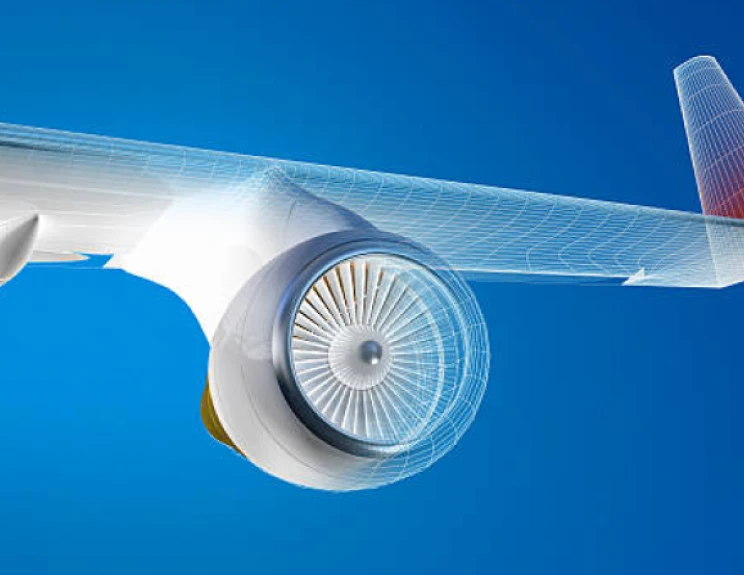
Digital transformation is no longer a buzzword – it is a must for the survival of every business. Recognizing this evolution, numerous solution providers such as SAP have embraced cutting-edge solutions to empower businesses to stay agile. In 2024, it is predicted that businesses will integrate smarter solutions, including generative AI and cloud services, focus more on sustainability, and enhance SAP skills and expertise for the future workforce.
1. Harnessing Generative AI – A transformative force
Generative AI has been a force to be reckoned within the past few years. According to KPMG 2023 CEO Outlook, 70% of CEOs are putting generative AI as a top investment priority. Indeed, SAP is no exception, with SAP unveiling a new wave of solutions to push the boundaries of innovation. Specifically, SAP Leonardo seamlessly integrated AI and ML capabilities across all facets of business operations, from managing the supply chain to enhancing customer experience. SAP Leonardo empowers organizations to become intelligent enterprises by integrating cutting-edge technologies such as artificial intelligence (AI), machine learning (ML), the Internet of Things (IoT), and analytics into their business processes. By leveraging these intelligent technologies, businesses can streamline operations, gain real-time insights, automate decision-making, and enhance customer experiences.
SAP has been assisting businesses in addressing various challenges for decades, starting with ERP and expanding across the enterprise. While the idea of AI-augmented cloud solutions may seem new, the reality is that AI has already been embedded into various use cases. As pointed out by SAP, over 24,000 businesses have recently leveraged SAP Business AI capabilities with remarkable results. For instance, Motor Oil Group needed to monitor the health of its refinery equipment to minimize downtime and reduce maintenance costs. By harnessing machine learning and predictive analytics from SAP, the company has built predictive models for abnormal events based on sensor data and integrated them into user-friendly dashboards and e-mail notifications. Hence, the company can explain abnormal events with 77% accuracy and predict future sensor measurements with 70% accuracy.
2. RISE with SAP and SAP S/4HANA Cloud solidifies their positions in cloud technology
The surge in cloud adoption is undeniable, thanks to its importance in boosting business growth. According to Deloitte, 90% of companies consider cloud technology essential for growth, digital transformation, and market competitiveness. Thus, this trend extends even to complex enterprise systems, even SAP. With the emergence of SAP S/4HANA Cloud, a Software-as-a-Service (SaaS) edition of SAP S/4HANA ERP system, this trend further highlights the growing traction of cloud computing.

Leveraging the power of cloud with RISE with SAP and S/4HANA Cloud.
SAP S/4HANA has primarily existed in on-premise deployments. Yet, the advent of SAP S/4HANA Cloud helps businesses venture into a new era with more affordability. Organizations adopting SAP S/4HANA Cloud have reported substantial benefits, including a remarkable up to 60% reduction in time-to-value. This cost-effectiveness is further augmented with flexible subscription models, allowing organizations to decrease implementation costs by 50%. Moreover, the transition to SAP S/4HANA Cloud can help organizations avoid the challenges of infrastructure maintenance and support. By leveraging pre-built platforms, organizations can accelerate deployment without the need for extensive customization or technical expertise.
As the maintenance support for SAP ERP Central Component (SAP ECC) runs out at the end of 2027, businesses are urged to accelerate their cloud migration. One initiative gaining traction is RISE with SAP, a viable alternative for companies seeking to leverage cloud technology in 2024. RISE with SAP offers a managed cloud service that allows organizations to continue using on-premise ERP software, including SAP ERP or SAP S/4HANA. Businesses can utilize RISE with SAP to integrate reliable cloud solutions seamlessly into their current data infrastructure. SAP states that companies can ensure uninterrupted operations with an uptime guarantee of 99.7%.
3. More sustainability initiatives with SAP in 2024
In recent years, the significance of sustainability for businesses has become more evident. For SAP, it is no exception. Research by SAP revealed enterprises' challenges when striving to implement corporate sustainability initiatives, including inefficient use of data and fragmented technologies that prevent information sharing. Given the remarkable impact of data centers, it is imperative for businesses to proactively address sustainability challenges. Indeed, a single data center consumes enough electricity to power up to 50,000 homes, accounting for 2% of global carbon emissions.

Sustainability – one of the top priorities for businesses in 2024.
Therefore, businesses could utilize tools such as SAP Sustainability Footprint Management to assess their environmental impact across various stages of the value chain, including product acquisition, production, and transportation. Specifically, they can calculate their footprints for different item types such as production, purchased products, resources, and suppliers on the platform. Besides, SAP’s Sustainability Control Tower is another solution that helps businesses drive the adoption of environmentally conscious practices. Besides sharing carbon data across supply chains for improved transparency and collaboration, companies can monitor sustainability performance over time to see if they are meeting their sustainability goals.
4. A stronger emphasis on upskilling SAP skills and expertise
Effective utilization of SAP ERP solutions requires a deep understanding of its functionalities. However, organizations encounter various obstacles during SAP implementation phases due to a lack of skills and expertise. New research from the Americas SAP User Group found that 25% of users said the talent gap was holding up projects overall, and 49% reported a lack of S/4HANA talent. Thus, upskilling employees emerges as a pivotal strategy, as recognized by 41% of companies, to maximize the potential of SAP systems.
Companies should actively encourage their employees to engage in training programs to tackle the skills shortage and meet increasing demand. SAP, in particular, is expanding its partnerships with training providers and offering resources such as SAP Learning to support skill development. Additionally, SAP is ramping up its collaborations with universities globally, aiming to increase the number of alliances from 900 to 4,000 within 3-5 years. This effort aims to educate 1 million students about business processes, including supply chain management and finance, and how SAP technologies apply to them. With these resources available, the future is bright for new talents looking to enter the SAP skills pool and alleviate the skills shortage in the tech industry.
Harnessing SAP to stay resilient
In 2024 and beyond, businesses can harness SAP with other technologies such as generative AI and cloud computing to gain a competitive edge. Additionally, prioritizing sustainability initiatives and upskilling SAP skills for employees will be crucial to sustaining business growth. But more importantly, to stay more agile, businesses will need a partner to help them navigate the challenges.
Thus, what factors should businesses consider before choosing an SAP partner?
All will be answered in this article: 4 Key Considerations to Select the Best SAP S/4HANA Cloud Partner.






























